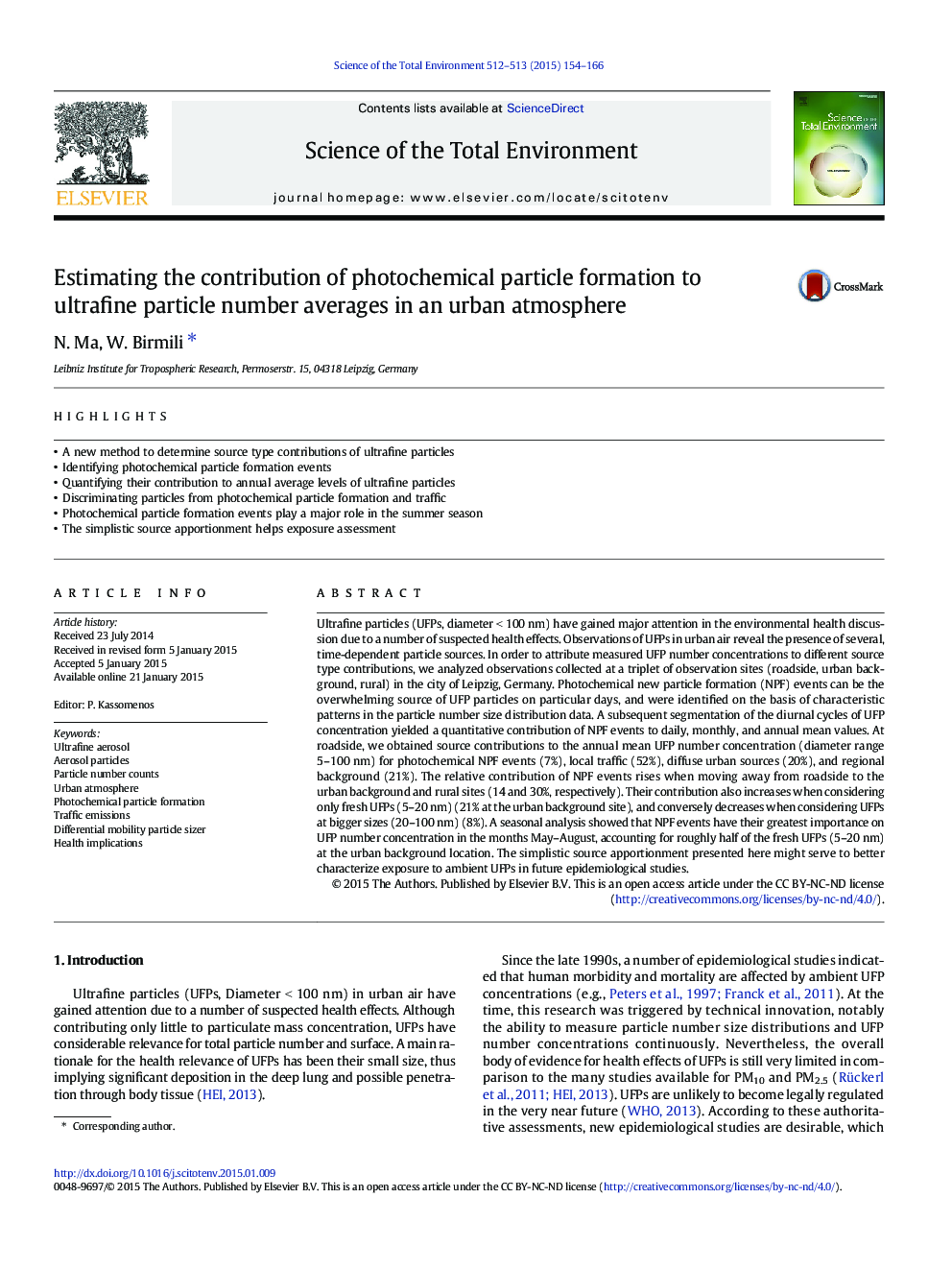| کد مقاله | کد نشریه | سال انتشار | مقاله انگلیسی | نسخه تمام متن |
|---|---|---|---|---|
| 6327163 | 1619765 | 2015 | 13 صفحه PDF | دانلود رایگان |
عنوان انگلیسی مقاله ISI
Estimating the contribution of photochemical particle formation to ultrafine particle number averages in an urban atmosphere
ترجمه فارسی عنوان
برآورد سهم شکل گیری ذرات فتوشیمیایی به میانگین ذرات فوق در یک فضای شهری
دانلود مقاله + سفارش ترجمه
دانلود مقاله ISI انگلیسی
رایگان برای ایرانیان
کلمات کلیدی
موضوعات مرتبط
علوم زیستی و بیوفناوری
علوم محیط زیست
شیمی زیست محیطی
چکیده انگلیسی
Ultrafine particles (UFPs, diameter < 100 nm) have gained major attention in the environmental health discussion due to a number of suspected health effects. Observations of UFPs in urban air reveal the presence of several, time-dependent particle sources. In order to attribute measured UFP number concentrations to different source type contributions, we analyzed observations collected at a triplet of observation sites (roadside, urban background, rural) in the city of Leipzig, Germany. Photochemical new particle formation (NPF) events can be the overwhelming source of UFP particles on particular days, and were identified on the basis of characteristic patterns in the particle number size distribution data. A subsequent segmentation of the diurnal cycles of UFP concentration yielded a quantitative contribution of NPF events to daily, monthly, and annual mean values. At roadside, we obtained source contributions to the annual mean UFP number concentration (diameter range 5-100 nm) for photochemical NPF events (7%), local traffic (52%), diffuse urban sources (20%), and regional background (21%). The relative contribution of NPF events rises when moving away from roadside to the urban background and rural sites (14 and 30%, respectively). Their contribution also increases when considering only fresh UFPs (5-20 nm) (21% at the urban background site), and conversely decreases when considering UFPs at bigger sizes (20-100 nm) (8%). A seasonal analysis showed that NPF events have their greatest importance on UFP number concentration in the months May-August, accounting for roughly half of the fresh UFPs (5-20 nm) at the urban background location. The simplistic source apportionment presented here might serve to better characterize exposure to ambient UFPs in future epidemiological studies.
ناشر
Database: Elsevier - ScienceDirect (ساینس دایرکت)
Journal: Science of The Total Environment - Volumes 512â513, 15 April 2015, Pages 154-166
Journal: Science of The Total Environment - Volumes 512â513, 15 April 2015, Pages 154-166
نویسندگان
N. Ma, W. Birmili,
